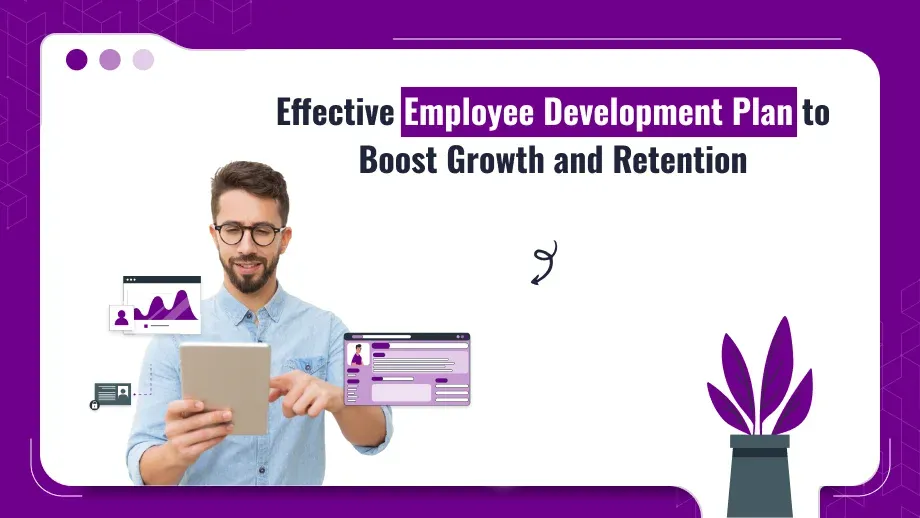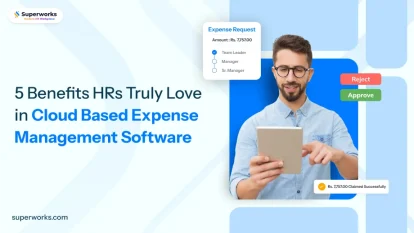
What Is an Employee Development Plan?
An employee development plan is a tailored framework that enhances an employee’s abilities, competencies, and performance. It’s designed to meet both personal aspirations and company-wide strategic goals. In practice, these plans bridge the gap for employees, prepare them for future roles, and ensure continuous learning.
Unlike general training, employee development are customized toward an employee’s current work and future potential. This individualized approach not only fosters employee engagement but also yields measurable results for the organization.
Why Are Employee Development Plans Significant?
Structured employee growth plan are critical to any firm that intends to excel in a competitive business environment. Here is the major benefit.
1. Increased Retention and Loyalty
Tied to the organization due to their career development and value contributions. Appreciates the investments the organization is making on their future.
2. Enhanced Skills and Productivity
Development programs ensure employees acquire new skills relevant to their roles. This improves overall efficiency and business performance.
3. Building a Leadership Pipeline
Development plans prepare employees to step into leadership roles. This ensures the organization has future-ready leaders who align with its culture.
4. Boosted Morale and Engagement
Employee’s worth and motivation by the employer that shows care about their growth. That results in higher levels of engagement and job satisfaction.
5. Resilience in the Face of Market Changes
Upskilling leads to keeping employees up to date with new technologies, processes, and market requirements.
Critical Elements of an Employee Development Plan
A robust development plan for employees should include the following components:
1. Individualized Career Goals
The plan should indicate career aspirations and map the way to reaching them.
2. Skills Gap Analysis
Identify the skills employees need to acquire or improve. Tools like Employee Engagement Analytics can offer insights into these gaps.
3. Training and Development Opportunities
Provide them with appropriate learning resources such as workshops, certifications, e-learning platforms, and hands-on experience.
4. Loops of Feedback
Establish a regime for providing regular feedback on the performance so that periodic evaluation to adjust can be done. Feedback could be from the immediate manager, peer, or mentor.
5. Timelines and Milestones
Set achievable timelines for completing training and reaching career milestones. Breaking plans into smaller goals makes them more manageable.
6. Metrics for Success
Define clear metrics to evaluate the plan’s effectiveness. For instance, improvements in performance ratings or successful project completion can indicate progress.
How to Create an Effective Employee Development Plan
Step-by-Step Process on How to Create an Effective Employee Development. Here’s how HR leaders can design one:
1. Understand Employee Aspirations
Start by engaging employees in meaningful discussions about their career goals. Use tools such as surveys or one-on-one to gather insight.
2. Evaluate Current Skills
There exists a step-by-step process when creating an effective employee development program. Conduct an appropriate assessment of each employee’s present skills. This can be achieved through performance reviews, self-assessment, or third-party assessment.
3. Role-Specific Needs
Outline the skills required for an employee’s current role and potential future positions. This ensures the plan is aligned with organizational goals.
4. Create a Structured Plan
Develop a detailed plan that includes:
- Short-term goals (e.g., completion of a course).
- Long-term goals (e.g., leadership transition).
- Relevant resources (e.g., mentorship programs, certifications).
5. Integrate Technology
Use platforms like HRMS Software in India or other HR tools to streamline the process. These tools can help with tracking progress, scheduling training, and providing analytics.
6. Monitor and Adjust
Schedule periodic reviews to assess progress. Be flexible and adapt the plan as needed based on employee feedback and organizational priorities.
Achieve 30% Efficiency with a Tech-Driven Employee Development Plan!
Streamline HR processes and focus on growth with automation tools tailored for you.
Common Mistakes to Avoid in Employee Growth Plans
Even the best intentions can lead to an ineffective employee growth plan if certain pitfalls aren’t avoided:
1. Ignoring Employee Input
Not engaging employees in the planning process leads to disengagement. Success belongs to collaboration.
2. Lack of Clarity
Ambiguous goals and vague timelines reduce the plan’s effectiveness. Ensure all aspects are clearly defined.
3. One-Size-Fits-All Approach
Generic plans overlook individual needs and career aspirations. Tailor each HR development plan to the employee’s role and goals.
4. Minimal Follow-Through
Development plan for managers must be monitored regularly. Neglecting follow-ups can make employees feel unsupported.
5. Overloading Employees
Assigning too many goals or tasks can overwhelm employees. Focus on manageable, impactful objectives.
Tools and Resources to Support Employee Development Plans
HR leaders can use a variety of tools and resources to design and drive effective plans:
1. Learning Management Systems (LMS)
Platforms like Udemy or LinkedIn Learning provide excellent courses to upskill employees.
2. HR Technology
Software like Top 10 HR Software in India or Attendance Monitoring Systems helps track progress and manage schedules efficiently.
3. Mentorship Programs
Assign experienced mentors to buddy with employees for guidance and valuable insights.
4. Peer Learning Opportunities
Encourage knowledge-sharing sessions where employees of Employee Development can learn from their colleagues.
5. Certifications and Conferences
Sponsor employees to attend industry-specific certifications or conferences to enhance their expertise.
Types of Employee Development Plans
There are different types of employee development plans, which suit specific needs. Knowing them would help a leader in HR design plans in line with organizational goals while attending to individual aspirations of growth.
1. Performance-Based Development Plans
These plans focus on improving an employee’s current job performance. They are ideal for addressing skill gaps, enhancing efficiency, and meeting immediate organizational needs. Common features include:
- On-the-job training.
- Performance reviews with actionable feedback.
- Workshops or seminars focused on specific skills.
2. Skill Development Plans
These policies aim at providing workers with the opportunities to learn new or upgrade their already known skills by having them easily followed and entered into the Attendance Monitoring System for proper monitoring of training participation. They may be helpful to employees who are preparing themselves for more challenging tasks or assignments under their current job conditions. Encourage a Growth Culture Create an environment where learning and improvement are recognized and encouraged.
- Technical skill training (e.g., software certifications).
- Soft skill development (e.g., communication or teamwork skills).
- Access to learning platforms for continuous education, linked with the Attendance Monitoring System for improved learning oversight.
3. Leadership Development Plans
Leadership-focused plans aim to groom employees for managerial or executive roles. These plans are critical for succession planning and building a strong leadership pipeline. They typically involve:
- Leadership workshops or coaching.
- Decision-making and conflict-resolution training.
- Real-world simulations or stretch assignments to test Leadership in HR potential.
4. Personal Development Plans
Personal development plans emphasize the employee’s overall growth, including non-job-related skills and wellness. They focus on holistic improvement and often include:
- Work-life balance initiatives.
- Stress management programs.
- Financial literacy or personal branding workshops.
Best Practices for HR Leaders in Employee Development
Implementing a successful employee development program involves adopting these best practices:
1. Align Plans with Business Goals
Ensure individual development plans support broader organizational objectives.
2. Foster a Culture of Growth
Create an environment where learning and improvement are celebrated and encouraged.
3. Offer Flexible Learning Options
Use a mix of in-person and online training opportunities to facilitate multiple learning styles.
4. Measure ROI
Track metrics like employee retention, performance improvement, and satisfaction to assess the plan’s effectiveness.
5. Promote Leadership Development
Train your high-potential employees for more managerial roles through development plans for managers focusing on the elements of leadership, decision-making, and communication.
How Employee Development Plans Affect Business Success
Investing in employee development plans delivers tangible benefits for businesses:
1. Improved Team Performance
Skilled employees contribute more effectively, enhancing overall team output.
2. Stronger Leadership
Organizations with robust development plans ensure a steady pipeline of leaders ready to take on new challenges. Leveraging HRMS Payroll Software in India, these plans become more effective by seamlessly managing training schedules, tracking progress, and aligning development goals with organizational objectives.
3. Reduced Turnover
Development plans show employees they are valued, reducing the likelihood of them seeking opportunities elsewhere.
4. Better Innovation
The updated skills and knowledge of employees will result in innovative ideas coming to the table at work.
5. Increased Profitability
Engaged, skilled employees directly contribute to better financial outcomes.
Conclusion
A development plan for employees is an important tool of HR leadership to lead and enrich talent, driving organizations toward success. Clear goals, proper utilization of HR software India, and addressing individual needs form the foundation for a motivated, skilled, and future-ready workforce within an organization. After all, investing in growth today yields a competitive edge tomorrow by making use of HR software in India for maximum efficiency.





